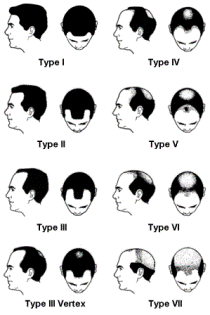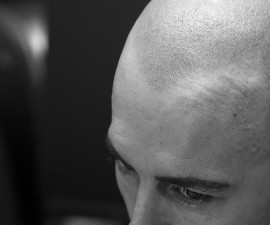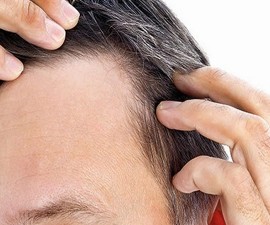… Continued …
*Image credit to Belgravia Centre
According to the Norwood Scale above, the stages and progression of receding hairline of male pattern baldness can be categorized into the following types:
- Type I, there is almost no noticeable thinning hair. If hair loss does occur, it is mild and almost can be ignored.
- Type II, hairline on both temples begins to recede. But there is still no significant hair loss. In this scenario, men are likely to start looking treatment or just to make sure whether or not their hair loss is normal.
- Type III. In essence, this is worse than type II. Thinning hair on both temples looks more clearly or even may have created M-shape. Many times, the first treatment is given in this stage.
- Advanced type III. While hairline on both temples is gradually and continuously thinning over time, another problem ‘thinning of hair on the crown /vertex’ starts to develop.
- Type IV, the next bigger pattern of advanced type III. Thinning hair on the temples and crown is getting worse (thinner) and bigger in pattern.
- Type V. There is almost no hair on front hairline, but a thin division line still survives. And thinning hair on the crown is also bigger and more noticeable than type IV.
- Type VI. U-shape has been more noticeable, and thinning hair on the vertex is bigger than before. The two areas are getting close to meet.
- Type VII. There is little hair both on top and front of the scalp. This is the most advanced stage.
The first time of when this male hair loss problem to occur can vary! Even it can occur as early as puberty.
But mostly, men start to notice their receding hairline at the ages of late 20’s or early 30’s. Even type III and type IV are quite common in this age range. Type VI and type VII are usually common in their 50’s or older.
On November 5, 2015





